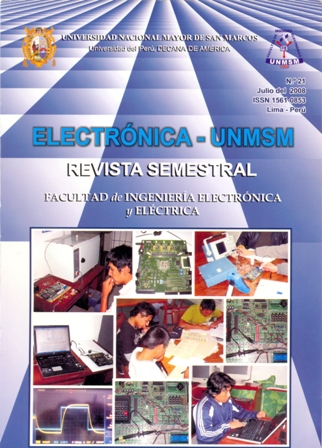Modelo de la Sequía en la Costa Norte de Perú Usando los Índices ENOS y las Imágenes NDVI del Sensor AVHRR a Bordo del Satélite NOAA
Keywords:
NDVI, NOAA, sequía, índices ENOSAbstract
It proposes a model for predicting the onset of drought on the North Coast of Peru using the time series of average monthly of Normalized Difference Vegetation Index (NDVI) of the AVHRR sensor images on NOAA satellite series, the El Niño Southern Oscillation indexes (ENSO), and the multiple linear regression technique. We obtained the time series of average monthly of time series of standardized anomalies about NDVI and ENSO in the period since 1981 to 2003. The evolution of the NDVI monthly in 2000 throughout Peru shows that the months of drought began in August and ending in December in all the country. The NDVI average throughout Peru varies from 0.0 (bare soil) to 0.7 (ground vegetation). The NDVI standard deviation shows that on the coast is lower than the mountain and jungle. The model is applied to the North Coast that is consistent approximately with the satellite data measures.Downloads
Published
2008-06-16
Issue
Section
Original papers
License
Copyright (c) 2008 Joel Rojas Acuña, Eleazar Rufasto Campos, José Carlos Eche Llenque, Flavio Carrillo Gomero

This work is licensed under a Creative Commons Attribution-NonCommercial-ShareAlike 4.0 International License.

Electrónica - UNMSM by Facultad de Ingeniería Electrónica y Eléctrica de la Universidad Nacional Mayor de San Marcos is licensed under a Creative Commons Attribution-NonCommercial-ShareAlike 4.0 International License.
Based on a work at http://revistasinvestigacion.unmsm.edu.pe/index.php/electron/index.
How to Cite
Modelo de la Sequía en la Costa Norte de Perú Usando los Índices ENOS y las Imágenes NDVI del Sensor AVHRR a Bordo del Satélite NOAA. (2008). Electrónica - UNMSM, 21, 12-22. https://revistasinvestigacion.unmsm.edu.pe/index.php/electron/article/view/3247


